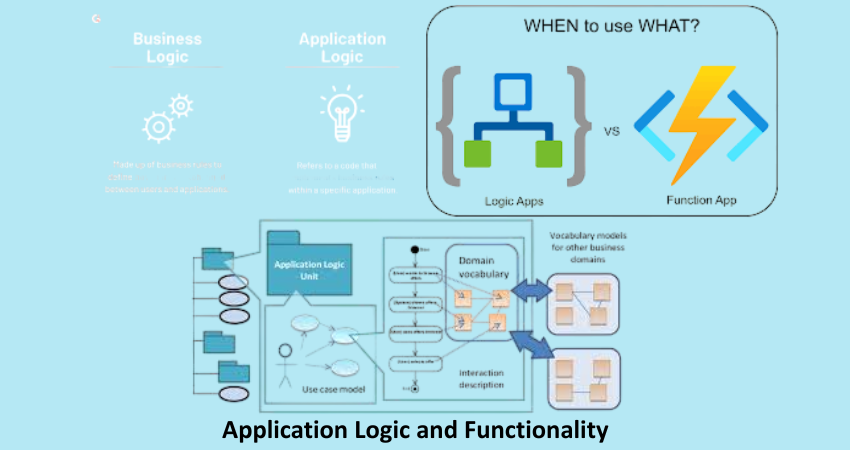
Websites are mostly perceived by people to be visual things-the layout, color, images, buttons. But they can never see underneath this beautiful interface the architecture of servers, databases, and logic, that work tiresomely to bring an application into being. This is where the back-end developer works, facilitating every click, login, and transaction in style and security.Although back-end developers seldom receive praise for the tremendous work they do, they are considered the unsung heroes of web development.
While the front-end takes care of presentation, back-end developers take care of everything else that renders it possible. They create and maintain the servers, databases, and application architecture; protect user information; and optimize database performance so that web projects are robust, scalable, and reliable.
The Back End: More Than Just Code
Understanding What Back-End Developers Do
Back-end developers take care of all the processes that take place behind the scenes on a website or application. They develop and maintain the server, write application logic, manage and manipulate databases, and maintain communication between the server and front-end interfaces. They perform these tasks using tools such as Python, PHP, Ruby, Java, and many others, along with various frameworks such as Node.js or Django.
While users have the best experience using such a system, relative to how it is hydrated to work on a website, an end-user may notice a slower performance, buggy behavior, or insecure transactions on the other side. Therefore, an outstanding back-end developer is very critical for the stability of the system.
Ensuring Seamless Communication Between Systems
Essentially, the back-end developer’s job is to ensure interoperability between all the components of a web system. This means the APIs allow for communication between front-end and back-end and connecting with third-party services like payment gateways and, of course, the data exchange between internal services. When communication does not succeed, the website does not function completely.Thus, the consistency and security of data exchange is the bedrock of stability, and back-end developers develop systems that reduce errors, increase speed and performance, and be scalable as the demand becomes high. With their intelligence, no matter how complicated the system becomes, it would function even when the pressure is increased.
Data Management and Storage
Designing Reliable Databases
They make design and development of databases which carry everything from user data to content and buying history along with site configuration. Databases are the central nervous system of every dynamic site; poor structuring can cripple performance and security.
The experienced back-end developer will know how to normalize data, avoid redundancy, and decide between a type of database-psql for junk data or NoSQL for more flexible things. Best practices are also implemented in data integrity prevention against loss or corruption, which is crucial for stability in long-term projects.
Implementing Secure Data Practices
In addition to storage, data security remains an enormous concern for backend developers because it involves employing strategies like encryption, tokenization, and secure data management to ensure sensitive data like passwords or credit card numbers or personal user data is well protected. This is not only beneficial to the users but also to their clients in helping protect their reputation as well as obtain compliance with legal frameworks such as GDPR or HIPAA.Security is a part and parcel of stability and cannot be wished away. A back-end breach can cause irreparable damage; it is therefore not uncommon that back-end developers are the gatekeepers to cyber threats. They help to regularly update systems and patch vulnerabilities in data handling captured within best practice regulations and compliance requirements.
Server and Hosting Management
Optimizing Server-Side Performance
Ensure and optimize for high availability and fast performance: the heart of every web application – the server – is a work of art by backend programmers. Backend programmers configure, balance load, and cache data to best reduce latency. A healthy server environment minimizes downtime and promotes user satisfaction.
All this boils down to server management. Correctly maintained servers ensure stability; an incorrectly configured or overloaded server will crash or halt a given site. Back-end developers work health checks, monitoring, and scaling mechanisms into the framework to ensure consistent performance irrespective of traffic patterns.
Selecting the Right Hosting Infrastructure
Another important decision for back-end developers involves choosing between shared hosting, dedicated servers, or a cloud solution (like AWS, Google Cloud, or Azure). These choices would be based on the size, expected traffic, and complexity of the project concerned. Wrong infrastructure choice may cause bottlenecks, security issues, and an unscalable system.A good back-end developer evaluates and sets up hosting environments that best fit business needs. The developer’s input serves to ensure that the infrastructure is sound, robust, and in a position to facilitate its own growth-essentials for a web project in long-term survival.
Application Logic and Functionality

Writing Clean, Maintainable Code
The true work of a back-end developer can be stated as follows: It is beside writing code for all the minds of all those back-end processes in the website. This includes the logic that authenticates every user, any e-commerce transaction that occurs, and even the logic that pushes all the real-time notifications to a user.
Any issue traces back to the entire puzzle they have deciphered and coded. Such code would be clean and modular because it ensures easy debugging, updating, and collaboration for other developers for whom it will not be a mystery.Little changes to nonmaintainable codes in back-end will be challengingly risky, and major issues can spread due to one single change. That is the reason a back-end developer codes considering all best practices, adopts version control systems like Git, and tests protocols that assure no-failure conditions in the system as a whole.
Testing and Debugging at Scale
Before the commencement of any project development, there comes an extensive series of standard tests on the backend developer against several use cases and user scenarios. These unit tests and stress tests simulate real-life conditions in order to find even this occasional very unexpected bug so that it can be fixed before it is caught by the user. This is very essential in delivering successful code into production.
And once the project goes live, they are usually hanging in the air waiting for the something to go wrong. They know all the debugging tools and logging systems that can help them nail the cause very quickly, deploy the fix, and restore the system after something has gone wrong.
Scalability and Performance Optimization
Building Scalable Architectures
Back-end developers are the ones responsible for setting up evolving systems under the business setting; from a small site today to an ever-increasing high-traffic platform tomorrow. Scalability will make sure that when there is stress, the performance does not suffer. Back-end developers use measures like load balancing, distributed databases, and asynchronous processing so that their systems can handle increased traffic with grace and humility.
Stability is not simply being OK today; it also implies being ready for tomorrow. Back-end developers will build systems to withstand sporadic use and allow for new feature implementations and the interaction with changing technologies, allowing reliability to be maintained evermore.
Performance Monitoring and Load Testing
The strongest code can still bottleneck in realistic conditions. Performance monitoring tools such as New Relic, Datadog, or Prometheus allow back-end developers to analyze systems under stress and determine where they run slow queries or inefficient cycles and leak memory.
By optimizing the performance continuously and performing load testing, developers ensure building web projects with the maximum robustness yet thriving under heavy load. Therefore, downtime is minimized while maximizing user experience – an important factor in customer and stakeholder retention.
API Development and Integration
Creating Reliable Internal and External APIs
When you’re talking about contemporary-day sites, these have to rely on APIs for fetching and sending data between systems. Another arm of the operations are back-end developers, who develop the APIs and ensure sound and secure data documentation around them. A well-built API gives front-end developers the power to put together a dynamic interface that allows users to access real-time data for delightful experiences.
Badly designed APIs therefore kickbacks for broken features, slow loading times, and rarely-even data breaches. A sufficiently robust API system; in turn, helps the entire community communicate in that predictable manner. That’s what presently gives off some of the best inter-operability between cross-platform applications, especially the mobile application versus the web application portals.
Managing Third-Party Integrations
Furthermore, those who are backend-oriented specialists do lots of rigorous studies on the third-party entities such as payment processors, CRMs, analytical tools, and email marketing platforms since the applications extend the functionalities on the site but are external sources when integrated poorly into them.
A developer must make sure that integrations are put to thorough testing and should be secured albeit some fallback options lively should a third party go down in the theory. Successful handling of such risks controls the external dependencies from affecting the overall stability of the project.
Security and Compliance
Preventing Vulnerabilities and Exploits
Measures taken by the backend developers to protect the website from malicious attacks are input validation, secure authentication, authorization checks, and Anti CSRF/XSS measures. Introducing or strengthening such measures will prevent the site from being defaced, the system being taken over, and getting data captured.
The loss of security often results in loss of confidence or may also bring legal consequence with respect to the destruction of brand quality. A good back-end developer should be able to understand potential threats and augment his system against penetration so that a fully functional yet secure environment exists for the users as well as businesses.
Maintaining Regulatory Compliance

Such legal compliance is seen in areas such as finance, health, and e-commerce. The back-end developers will integrate log trails, consent logs, and storage rules according to the board requirements.
This lack will give rise to penalties and lawsuits. The developers who understand these limitations ensure plausibility and stability of project feasibility in the long term. They include legal teams and stakeholders in all the features that comply with industry-wise compliance.
Working With Cross-Functional Teams
Backend developers as employees do not function in seclusion; they are joining hands with frontend creators, UX designers, devops engineers, QA testers, and project managers to develop a live site. Conversations take place and their technical decisions are entirely brought together for the purposes of a project alignment.
When working through this collaborative process, planning becomes enhanced, surprises are minimized, and seamless execution is enabled.Culture is what underpins shared ownership and continuous improvement, which are important for the life of the project and adaptability.
Supporting Ongoing Updates and Maintenance
A web venture is never completed in one breath. Features are added, bugs are fixed, and the entire infrastructure is updated.from there on, they remain for the organization to evolve without glitches.
These create long-term continuity and institutional memory. Whenever new people come into play or bifurcation changes in business, back-end developers make such changes without rocking the core architecture once more. They truly are the linchpins of digital stability.
Conclusion
While back-end developers may not always be in the limelight, they are indeed the very backbone to every web project with regard to smooth functioning and accomplishment. They create the system that takes care of data flow, server uptime, API responsiveness, and uttermost user experience—all of which comes down to the scale and complexity of the application.
Here lies the space in which back-end technology undergirds modern web development. Investment by a company in back-end development means that the digital presence of that company remains healthy and is propped up by performance in the long run. Thus back-end development cannot be seen as mere coding; it represents the hidden architecture for web reliability, the very forces keeping the whole digital world tick.